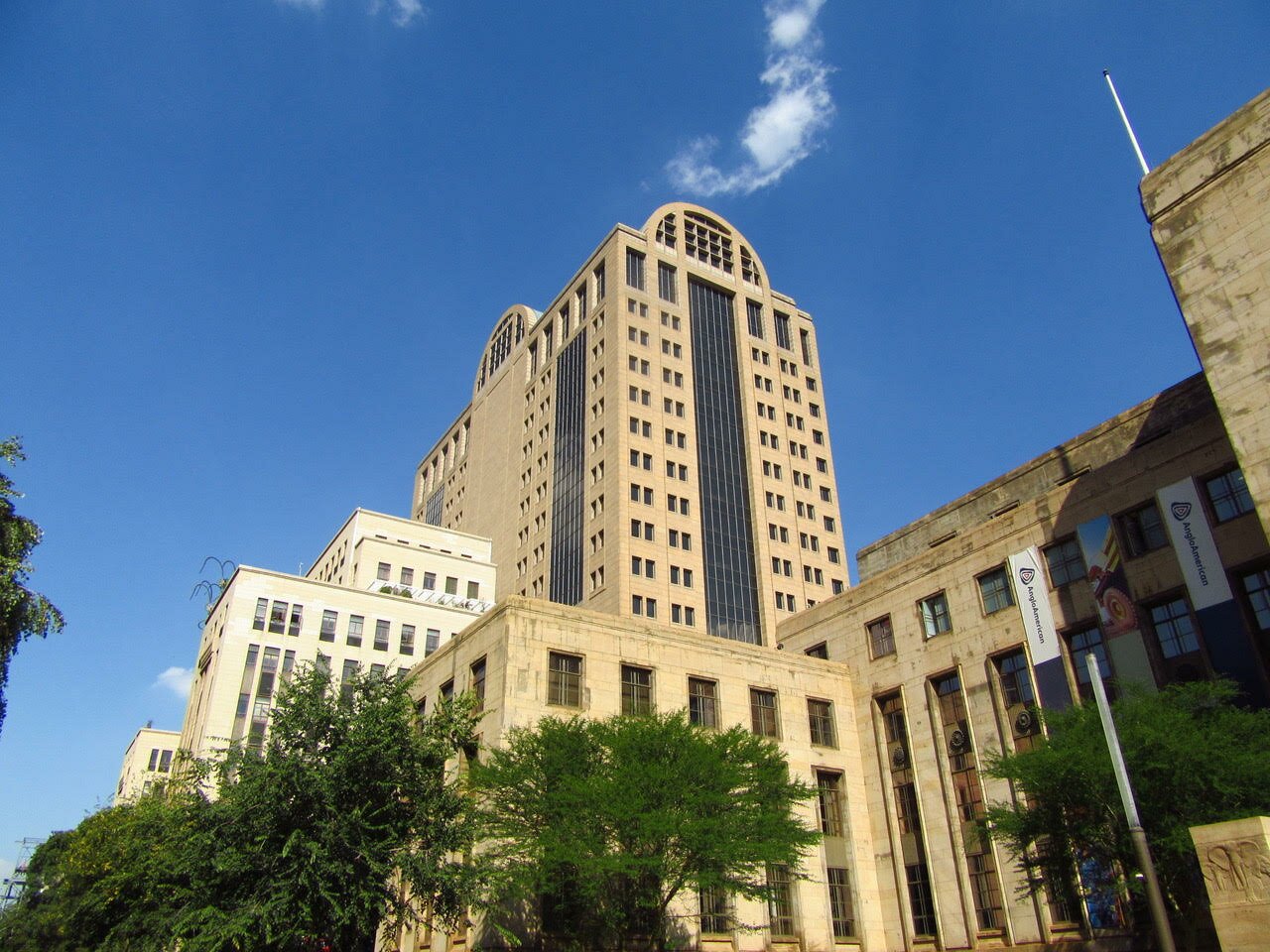According to an advertisement on local TV, Sandton is the richest square mile in Africa. Built in 1973 in the brutalist style of the epoch, sometimes known as Apartheid Architecture, Sandton City is a chic mall that attracts wealthy shoppers of all ages and races; given the weakness of the rand against western currencies, you can include me among those wealthy shoppers. When you get out of the plane at O R Tambo, you pick up the tourist map for Johannesburg. Sandton is right in the middle of the map, for all to see and, hopefully, visit.
However the decaying (or rather, decayed) Johannesburg Central Business District is off the the tourist map, both literally and figuratively. As Yogi Berra would say: nobody goes there any more – it’s too crowded. Too crowded with Africans. It is difficult for the tourist to understand how a city centre that was, I am reliably informed, exclusively white until the end of apartheid has become exclusively black.
There is a urban grimness to the central blocks of the CBD that is reminiscent of the poorer parts of Nairobi. The sidewalks are badly maintained and although the new municipal administration wins approval from some for improvements to the quality of life in the city, litter lines the streets and vagabonds gather under the bridges. (Road bridges, that is. Johannesburg is the biggest city to be built away from any lake, river or sea.) Central Johannesburg has a reputation for being a dangerous place. One Uber driver dropped me off on Rissik Street and waited – at some risk to himself – while he watched me go up the stairs to Park Station. Once on the station forecourt, he said, with all the security people around, I would be safe. As a resident of the old South West Township, the driver informed me Soweto was far safer than central Johannesburg. In Soweto, people are only too happy to see tourists. Yet as in so many decayed cities, in Johannesburg gentrification is on its way.
Churchill famously said “It is alarming and also nauseating to see Mr. Gandhi, a seditious middle temple lawyer, now posing as a fakir.” Admirers of Churchill will be relieved to see Gandhi’s bronze statue wears legal robes and not a fakir’s loin cloth in the square named after him. Gandhi Square is being renovated, as is much of the central area of Johannesburg. On tree lined Fox Street nearby, I enjoyed taking a meal and a glass of wine on the pavement terrace, served by friendly waiters.
Perhaps Fox Street should be renamed BET Street.
One lunch in City Perks Café I met three secretaries, taking their break away from the office. When they spoke in English – among themselves they chatted in Sesotho – their language was more influenced by Black Entertainment Television and ghetto rap than by the Simpsons and Bones of Fox TV. All three could move their necks and heads in the feisty assertiveness of Wendy Williams and their uninhibited use of bitch and nigger was a permanent affront to my political correctness.
Less than thirty years ago, these chic, young intelligent Africans would never have been in the city centre without a pass. Now they own the place, morally if not economically. “You’ve Come a Long Way, Baby,” Virginia Slims cigarettes used to tell women back in the seventies. Women in South Africa have still got a long way to go but as I saw on Fox Street, there’s no going back for the African Wendy Williams: Johannesbourg nous appartient (Johannesburg belongs to us).
